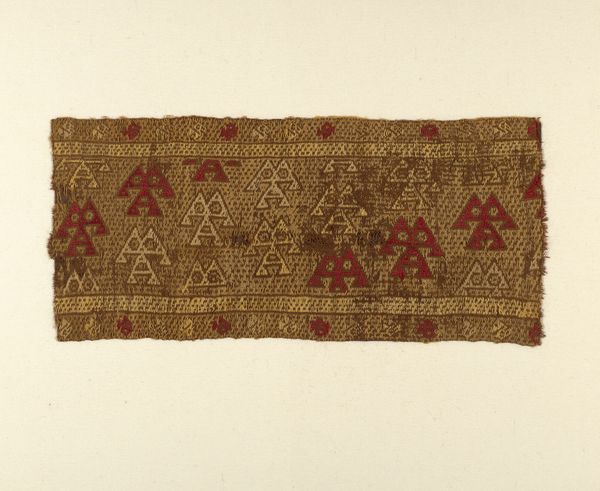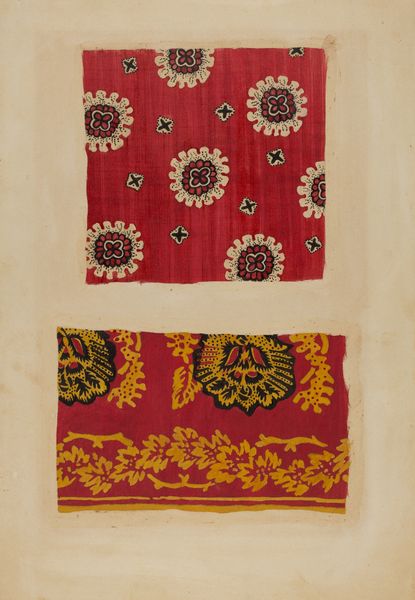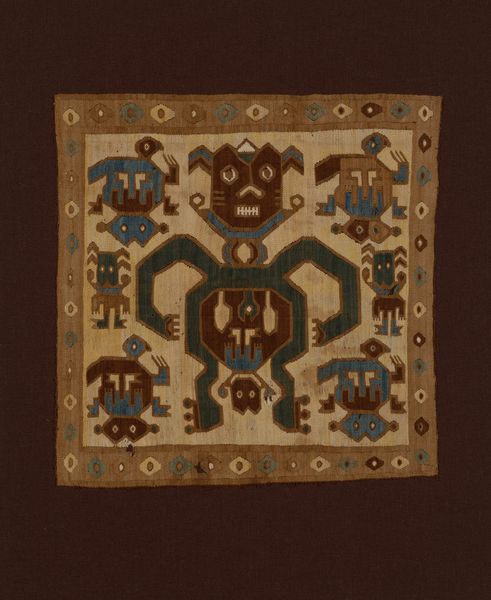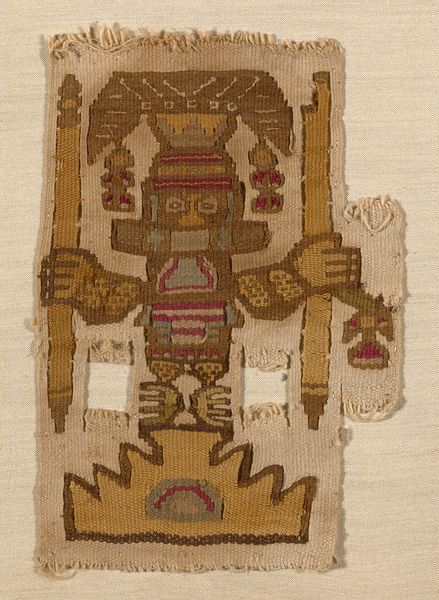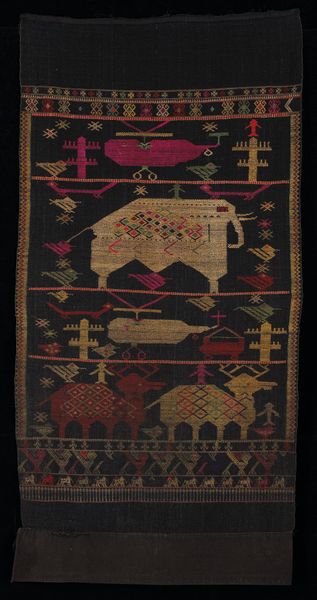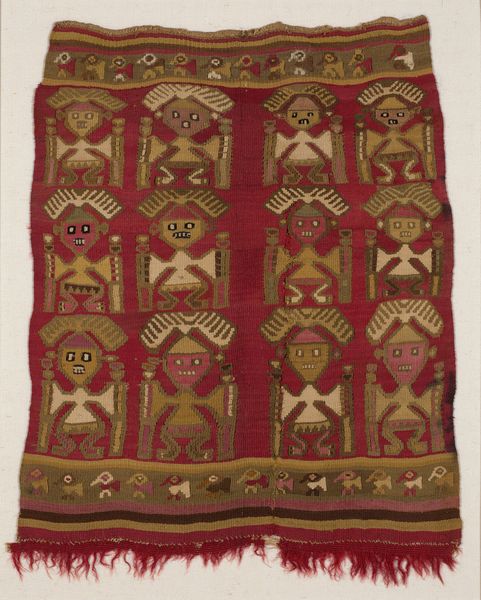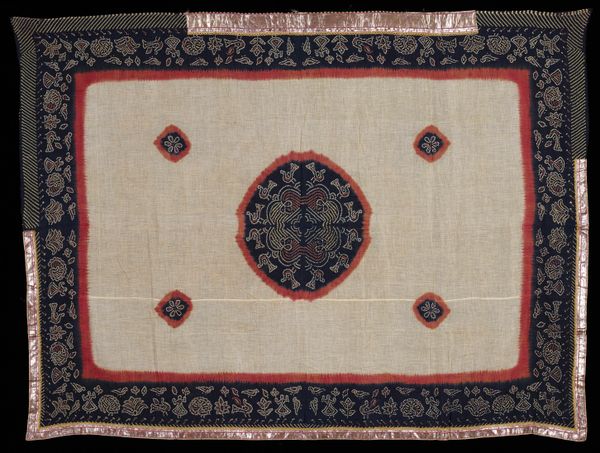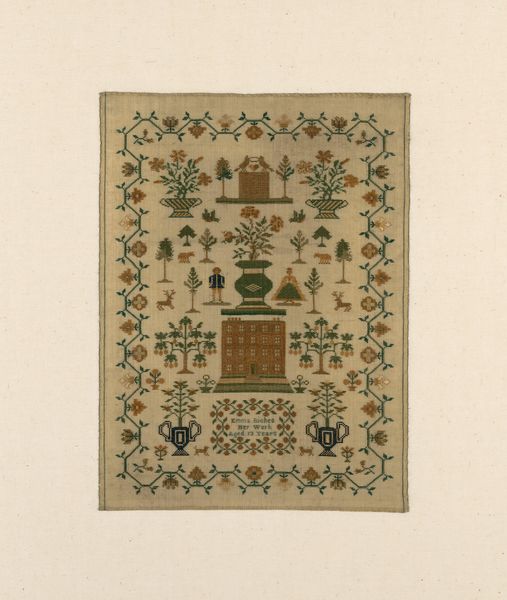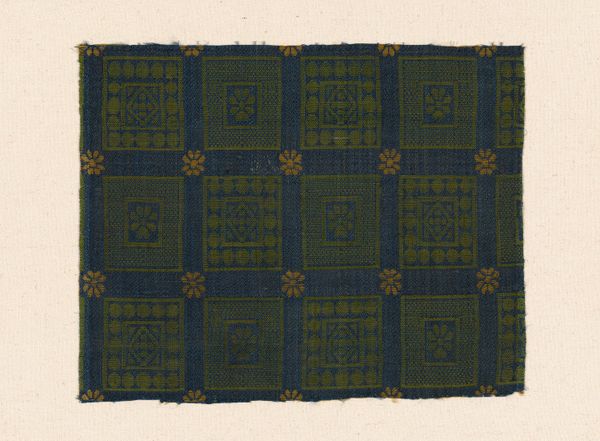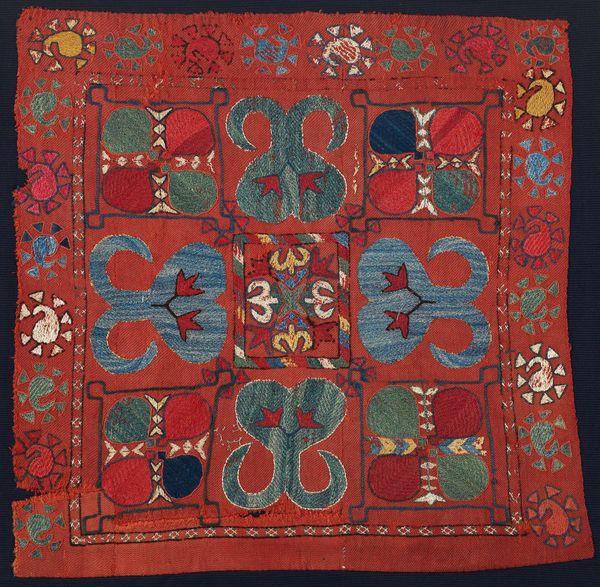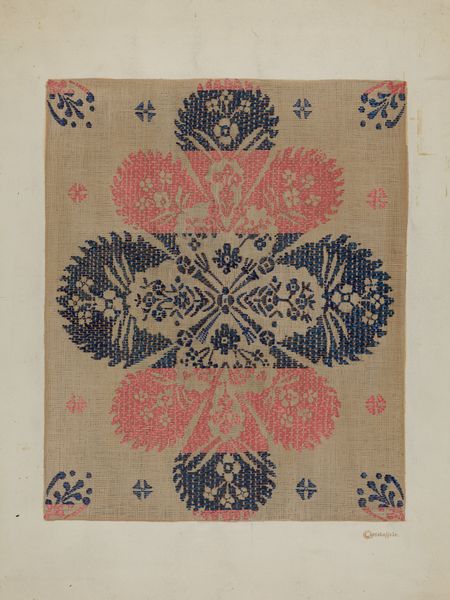
fibre-art, weaving, textile
#
fibre-art
#
decorative element
#
weaving
#
textile
#
geometric
#
indigenous-americas
Dimensions: 30.5 × 20.6 cm (12 × 8 1/8 in.)
Copyright: Public Domain
Editor: Here we have a textile fragment, titled "Fragment (Tunic)", possibly from between 1476 and 1532. It's an Inca weaving at the Art Institute of Chicago. The geometric patterns, set in alternating red and beige squares, almost feel like an ancient code. How do you interpret this work? Curator: Well, "ancient code" isn't far off. This little scrap vibrates with meaning, doesn't it? It whispers of power, status, and a deeply interwoven worldview. Think of it: each square isn't just decoration, it's potentially a symbol, a glyph, maybe even a story compressed into textile form. It’s tantalizing because we can’t fully decode it, we are only guessing. How would you even begin to unravel its secrets? Editor: That's exactly what's so intriguing – the unknown narrative! The figures within each square, they look almost like stylized people, or maybe deities? Curator: Possibly. And the precision of the weaving! This wasn't just something someone whipped up on a whim. The Incas considered textile production an act of devotion and a display of imperial might. This fragment, even separated from its original context, reminds us that for the Inca, art wasn’t just about looking pretty; it was a fundamental language. A language so complex, we are still struggling to understand it today. Editor: It’s incredible to think of all the cultural and historical information woven into this small piece. It definitely encourages me to dig deeper. Curator: Exactly! It shows how a fragment can open up a whole world, and spark a deeper reflection. It is like holding a story in your hands, one that invites you to participate in the mystery.
Comments
No comments
Be the first to comment and join the conversation on the ultimate creative platform.
